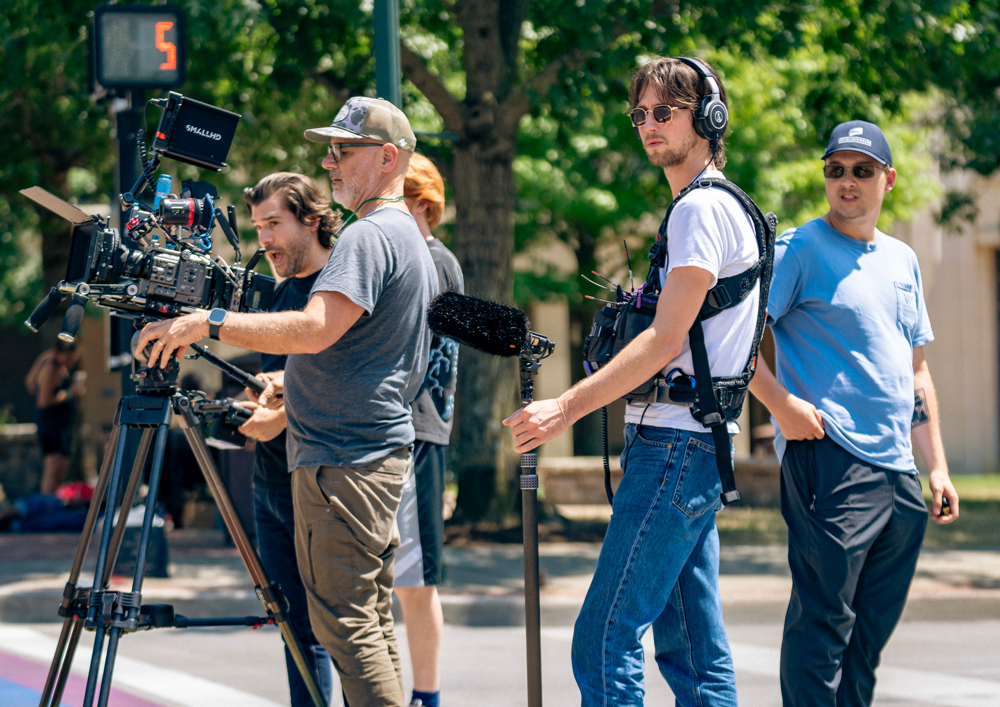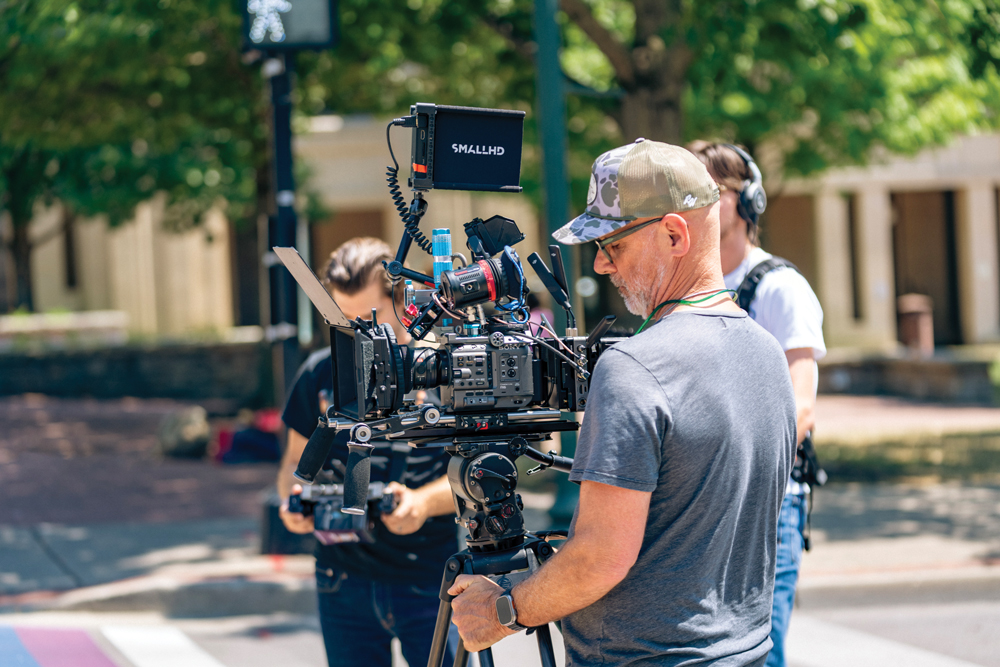Kentucky continues to earn its seat at the national film industry’s table
Over 10 years ago, Tim Bates, senior program manager at the Kentucky Cabinet for Economic Development, and actor Steve Zahn sat outside a café in Lexington and began chatting about the potential of building an established film industry in Kentucky.
At the time the conversation seemed nothing more than a “pipe dream or fantasy” to them both, albeit the idea of being able to work close to home had an undeniable appeal. A decade later, following one of the first shoot days on the 2023 film “Wildcats,” Bates received a text from Zahn stating, “I’ve never been able to do this,” followed by an image of him feeding goats on his family’s farm that same evening.
Hollywood has shown its favor to Kentucky as a filming destination for generations, producing classics such as “Coal Miner’s Daughter,” “Next of Kin,” “In Country,” “Dreamer” and more around the state. In the past, the luxury of housing the full cycle of a production’s needs had yet to come. The same cannot be said today.
Kentucky’s film industry supports more than 6,570 direct and 14,830 indirect jobs, resulting in over $350 million in wages, according to recent data from the Motion Picture Association. This growing industry is bolstered by adequate infrastructure, locations and, more importantly, an incentive that keeps filmmakers coming back for more.
“It’s not just a dream anymore,” said Bates. “It’s all because of this tax incentive that we have in place and what we’re trying to build here. It’s gratifying to see the progress we’ve made. There’s still a long way to go, but we’re moving in a good direction.”

Kentucky offers over 1,300 physical filming locations across the state.
Photo courtesy of FilmLEX



Ethan Hawke’s “Wildcat” film was shot entirely in Kentucky in 2023, featuring his daughter, Maya Hawke (ABOVE RIGHT).
Photos by Kennedy Cochran
Why It Works
The diligent development of Kentucky’s film industry is built on the back of the aggressive Kentucky Entertainment Incentive (KEI) Program.
KEI provides a 30% refundable tax credit, which can grow to 35% in qualifying counties, carrying a $250,000 minimum spend for up to $10 million back. Currently, the state caps its tax credit at $75 million.
In 2024, the state approved 77 productions through the KEI Program. The approvals made nearly $68 million available across various television, documentary, feature-length film and National Touring Broadway Show productions. The revival and reframing of the state’s film tax credit in 2022 continues to prove strategic. In 2024, the KEI Program saw approvals of approximately $15 million more than it did in 2022 and over $7.2 million than in 2023.
“Part of what makes Kentucky appealing and an ideal filming destination, on top of the incentive we have, is that your dollar is going further than it is in California, Georgia or New Mexico,” said Bates.
The incentive works as a three-legged stool. The first leg is supported by the vigorous KEI program that appeals to industry executives and independent filmmakers alike. The second leg forms as infrastructure suited to every aspect of production activity arises. The final leg is held up by a highly skilled and readily available workforce that pulls these initiatives together, including a growing base of apprenticeship programs, such as the one led by Asbury University in Wilmore.
Despite downturns the nation’s film industry has faced in recent years, it remains evergreen. People crave the ability to attend a showing at their local theater or log on to any number of streaming services to relax with a new or classic film and transport from reality. Kentucky’s tax credit is suited to keep future productions going with ease.
“To me this is about building an apparatus to be able to tell our stories, because that is how we orient ourselves to the world, and sometimes that’s how we make it through the most nightmarish circumstances,” noted Bates.
Find a Hidden Gem
Communities aren’t always aware of their filming location gems.
The truth of the matter is a majority of productions aren’t looking for glitz and glam in the background of every shot. Iconic film and television productions take place in the most unlikely of places, ones often overlooked or forgotten about.
Kentucky’s diverse geography and infrastructure allow the state to double as any location in the world through the power of a camera lens. The Kentucky Cabinet for Economic Development aims to present the ins-and-outs of every community around the state in its raw form, from dolled-up main streets to dormant industrial areas and everything in between. In compiling an extensive database of filming locations, scouts have the ability to superimpose their unique vision well before the camera gets rolling.
In an example best seen today, a vacant office building centrally located in downtown Louisville has become a hotspot for three new feature-length films. The most recent production is “Dead Man’s Wire,” starring Bill Skarsgård and Dacre Montgomery, directed by Louisville native and renowned independent filmmaker Gus Van Sant.
With the addition of dedicated studio space coming to life at the former Louisville Armory venue, now named Louisville Gardens, the city plans to remain one of the state’s premier destinations for creatives. The 40,000-sq.-ft. studio will feature four sound stages, revamped office space and a black box theatre. This same activity expands just over an hour east in Lexington, as Wrigley Media Group has begun operations at the state’s largest production facility, LEX Studios. At 52,000 sq. ft., the former Woodhill Cinemas site hosts three sound stages, production offices, various green rooms and amenities fit for any size film or television project.
As the state is now being approached to introduce more facilities of this kind outside of Kentucky’s largest metros, Bates shared that these ventures are just the beginning of what’s to come.
“That kind of activity begets other activities,” he said. “That’s exactly what we want to see.”

